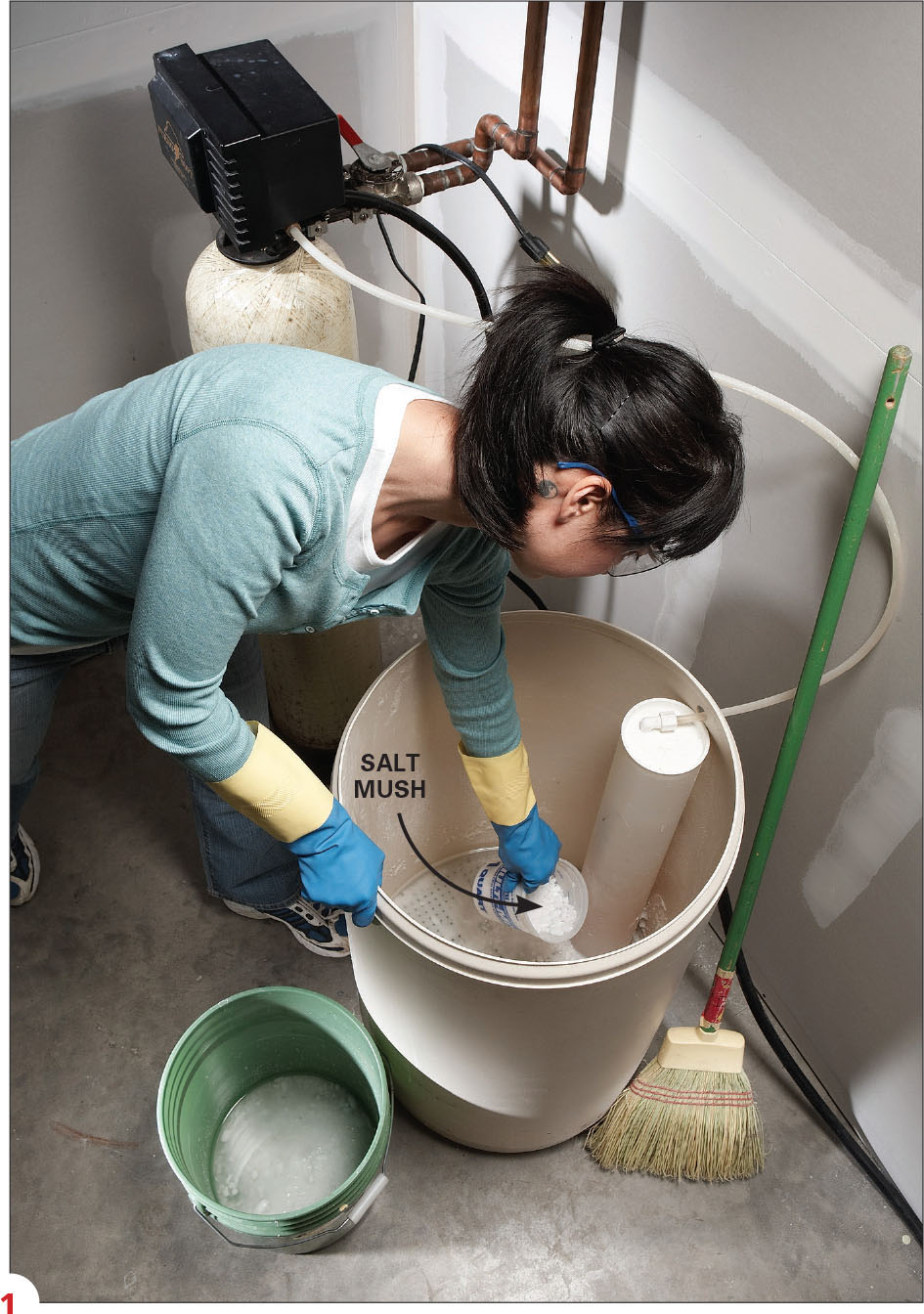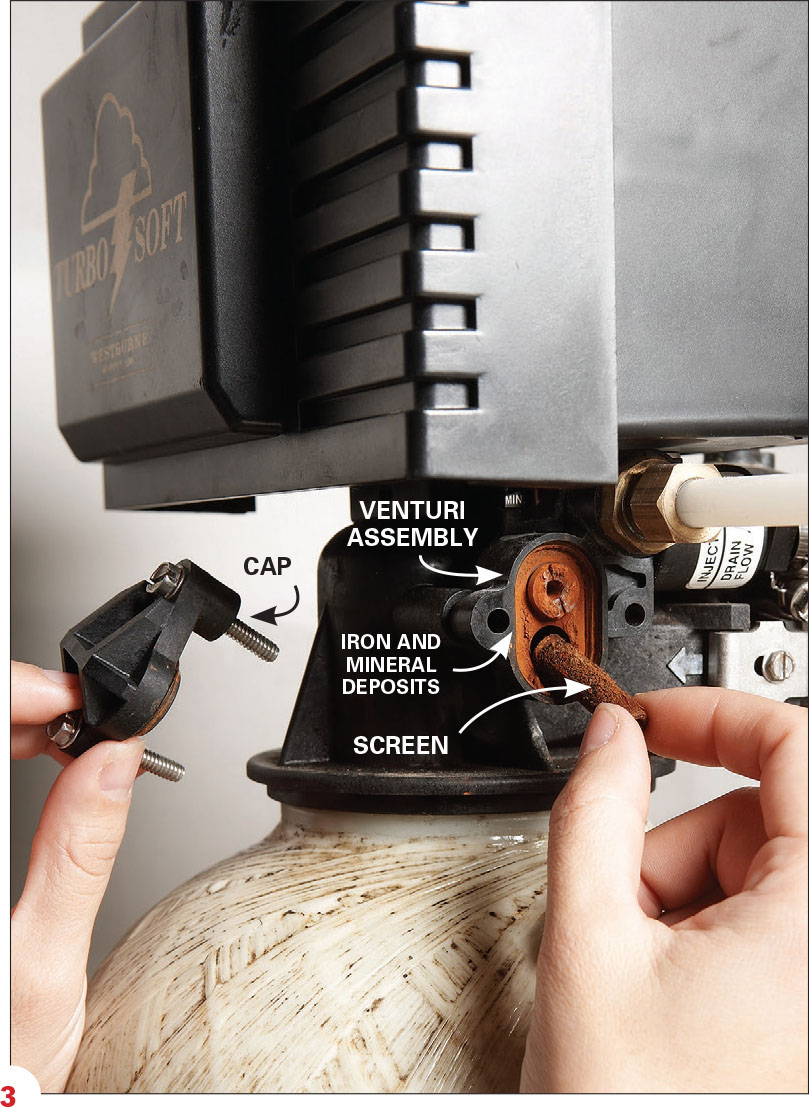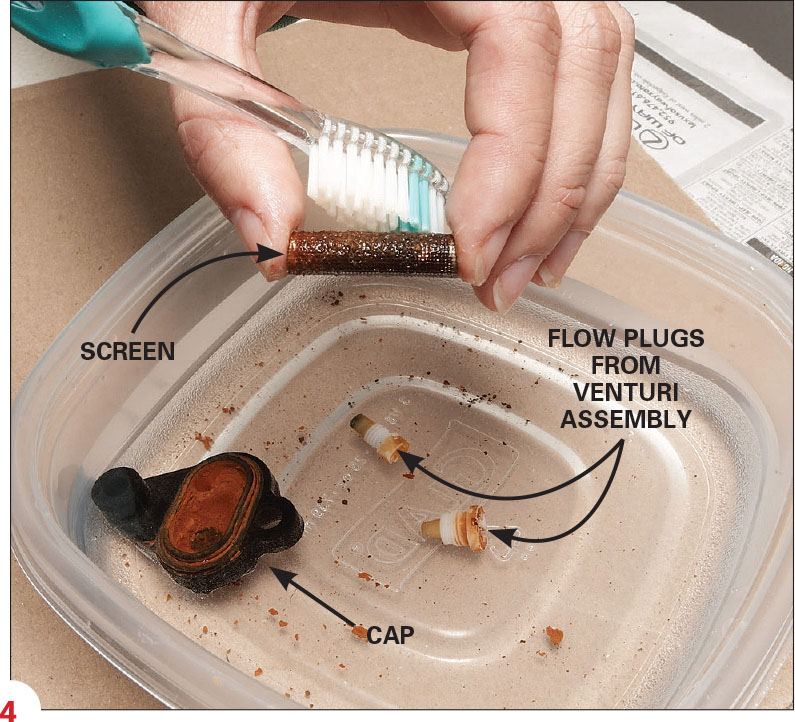
Is your soft water not so soft anymore? You can often fix the problem yourself. However, if you have an older softener (20 years or so) and none of these fixes work, it may need replacement

1. Set the water supply to bypass.
Put on safety glasses. Check for salt problems in the brine tank. Start by pushing a broom handle down into the salt to break up salt bridges (like a dome), blocking salt from dropping to the bottom of the tank. If too little salt gets dissolved, the resin bed won’t get clean and the water won’t get softened.
When the salt level is low (or at least once a year), check for a crust of salt mush at the bottom. This thick salt paste doesn’t dissolve well, reducing the salinity of the brine solution, and needs to be removed.
Scoop out the mush at the bottom of the tank, then pour in hot water to dissolve the rest before regenerating the system.

2. Pour diluted resin cleaner into the brine well tube. Lift out the air check valve (or brine valve assembly) and clean it in warm water.

3. Unscrew and remove the cap that covers the venturi assembly and filter screen and carefully remove the parts.

4. Gently clean dirt and mineral deposits from the screen and from the venturi assembly parts in a pan of warm water. (The salty water flows through these parts from the brine tank to the resin tank. If the screen and nozzle get clogged by sediment, the resin bed won’t be cleaned and the water will stay hard).
Turn on water supply and run the hot water after you turn the softener back on to flush out any hard water.